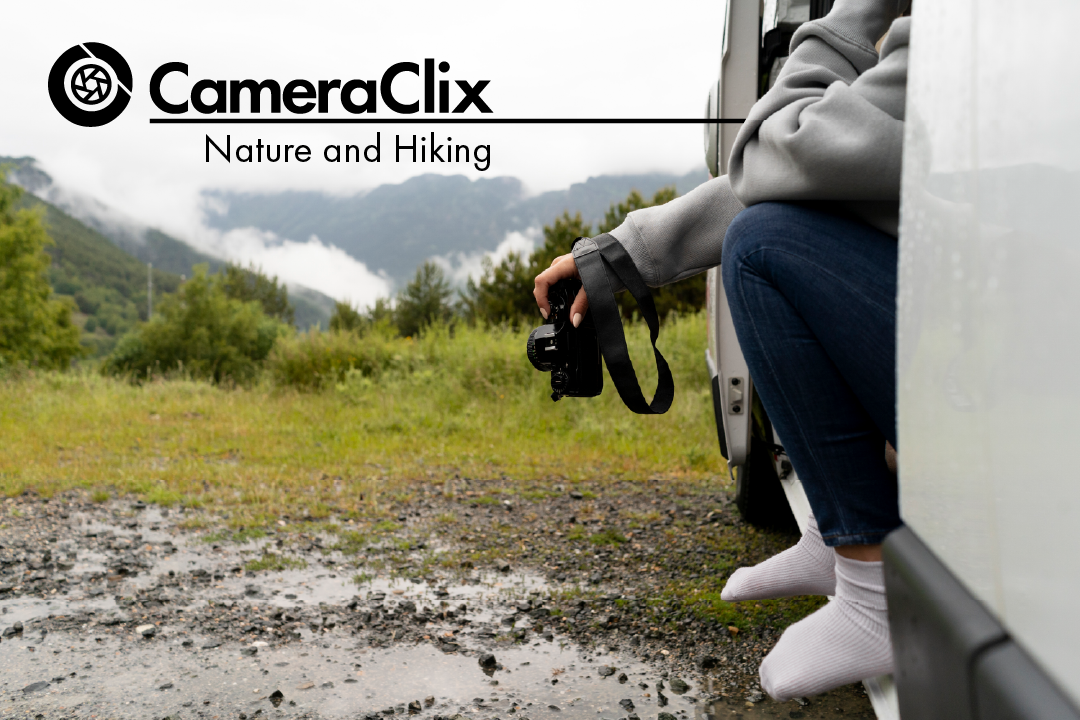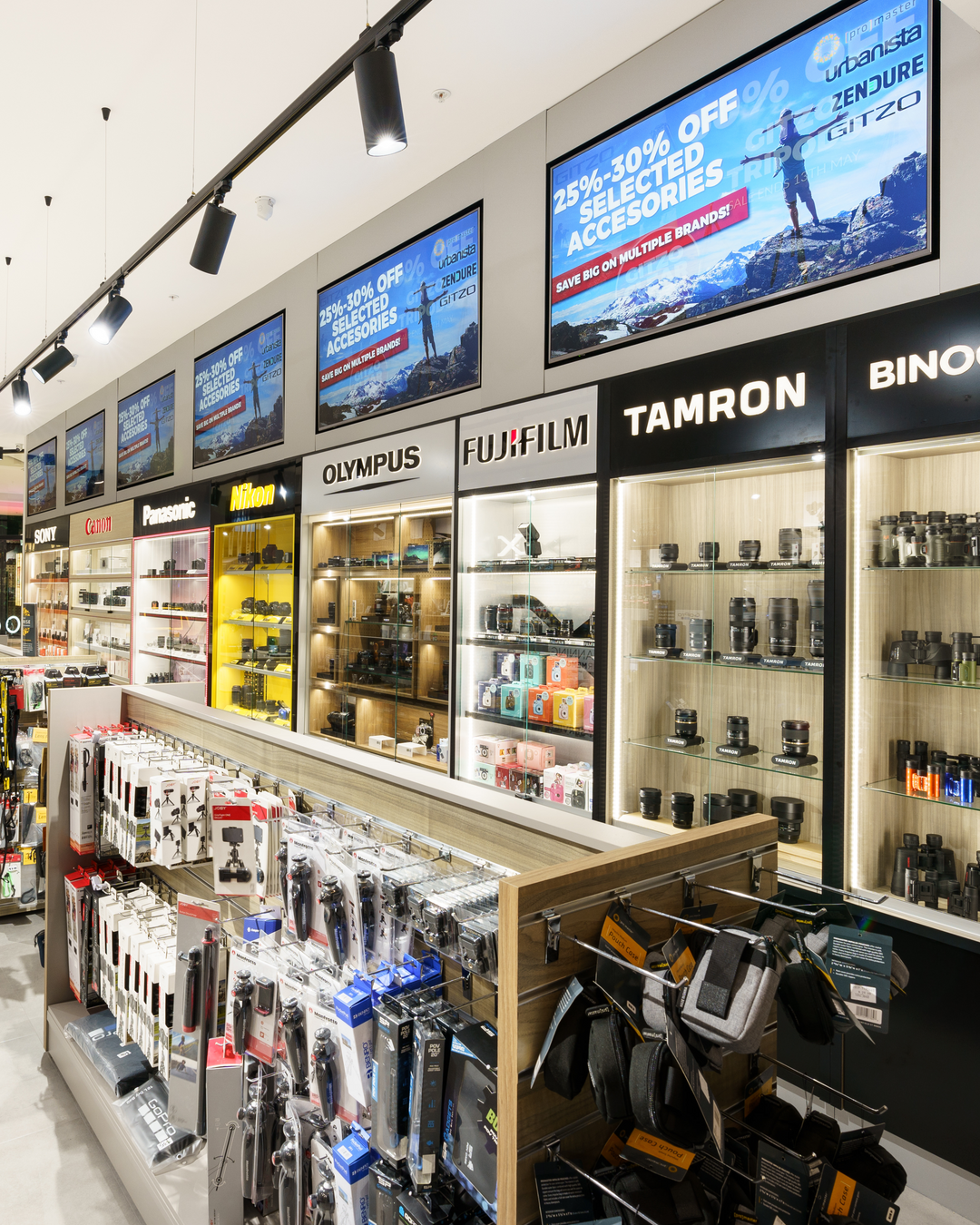Travel Photography Guide: Nature and Wildlife

Travel photography in 2025 demands gear that’s versatile, durable, and perfectly suited for unpredictable outdoor environments. Whether trekking through remote landscapes or capturing wildlife during golden hour, your equipment must be lightweight yet robust. In this guide, we explore modern trends, essential techniques, and the best products—from camera bodies and lenses to bags, support systems, and accessories—to help you capture breathtaking nature and wildlife images.
Trends and Techniques in Nature & Wildlife Photography
Important Features to consider
When you are hiking, or going off the beaten path you often need to make sure you are travelling as light as possible, with gear that is reliable and durable in a variety of conditions, but the trickiest part is you also need a decent telephoto reach and something that can perform in poor lighting conditions. Both of these things make cameras and their attached lenses much bigger and heavier, so it really is about getting your own personal happy medium, something you are comfortable to carry around with you no matter where you go without feeling like you are compromising on the types of shots you want to shoot!

With that in mind we recommend keep an eye on the following for your gear choice:
-
Weather Resistance: Modern gear is built to withstand rain, dust, and temperature fluctuations. Look for cameras and lenses with multiple dust- and moisture-resistant points.
-
Compact & Lightweight: Today's high-performance cameras combine top-quality imaging with a travel-friendly design, allowing for easy portability during long hikes.
-
Low Light & Fast Action: Advances in sensor and autofocus technology enable the capture of fast-moving wildlife and low-light scenes with exceptional clarity.
But most importantly, patience & research
Understand your subject’s behavior and environmental cues if you are shooting wildlife ensures you're prepared for the perfect shot. Make sure you understand what kind of conditions you can expect, how close you will be able to get to what you want to shoot, and what the ground will be like for you to stabilise any larger lens you take with you. And of course we recommend at least a couple extra batteries.
Gear Selection: Cameras & Lenses
Choosing the right gear is crucial. Here are recommendations across different price points, along with practical tips for each product to enhance your photography experience.
Camera Bodies: Options for Every Budget
All of these Mirrorless Camera bodies were chosen because they have a full feature set in as small a package as possible.
Entry-Level Options
-
OM‑D E‑M10 Mark IV
Weighing approximately 335 grams, the E‑M10 Mark IV's compact and lightweight design allows for extended field use without causing fatigue. Its small size enables discreet shooting, minimizing disturbances to animals in their natural habitats.
-
Sony a6400
Utilize its continuous autofocus (AF-C) with real-time tracking to freeze the action of quick subjects, like squirrels or fluttering birds.
Mid-Range Options
-
Olympus OM‑5
Its weather-sealed build makes it perfect for shooting in misty landscapes or rainy wildlife scenes. Experiment with low-angle shots to capture waterfalls in motion.

-
Sony a6700
Use its advanced subject tracking to capture dynamic scenes such as a herd of animals moving through a valley or a flock of birds taking off.
Top-Tier Options
-
OM‑1 Mark II
With high-frame-rate shooting and superior autofocus, the OM‑1 Mark II is ideal for capturing fast-paced action on a safari, such as a leopard mid-leap.
-
Sony A7C Mark II
Leverage its full-frame sensor and high dynamic range to capture stunning nightscapes or detailed wildlife portraits under low-light conditions.
Recommended Lenses
-
Olympus 14‑150mm f/4.0‑5.6 Mark II Black Lens
Its versatile focal range allows for quick transitions from sweeping landscape panoramas to zoomed-in wildlife details—ideal for capturing a herd in the distance or a close-up of a bird’s feathers.
-
Sony FE 70‑200mm f/2.8 G SSM II Lens
Leverage its fast aperture to track fast-moving subjects such as birds in flight or a fox darting through the brush.
Full Systems
These are some bridge or compacts that we would recommend for those who want to travel even lighter than having a mirrorless system.

-
Nikon P1100
The newest from Nikons famous range of "super-zoom" cameras a term which frankly feels insufficient for the up to 3000mm equivalent lens the P1100 has and in a package smaller than DSLR's. It does make some concessions.
-
Panasonic TZ99
The newest release from Panasonic, pocket sized with a huge 720mm equivalent lens, if you are looking for a great camera without adding extra weight or thought to your gear setup the TZ99 is a great option
-
Olympus TG-7
While it does make some tradeoffs in features and raw image quality compared to other options on this list, if you want a tough pocket sized compact, none get as tough as the TG-7. Full water, freeze, dust, drop and crush resistance means this camera can go wherever you can go without worrying about whether it will be okay.

-
Fujifilm X100VI
It would be hard to have a list of camera recommendations without mentioning the King of Compacts, the X100VI has a monstrous 40MP sensor, and is equally uncompromising across the board. There is obviously a premium you pay for such a versatile and powerful compact, but if you must have the best of a super powerful camera that is also easy to carry the X100VI is a winner. We also recommend picking up the NISI Lens Hood and filter kit, as it will let you attach different filter types to it's normally fixed lens expanding that versatility even further.
Must-Have Accessories for the Outdoor Photographer
Bags and Cases
-
Lowepro ProTactic 350 AW II
Organize your gear into dedicated compartments (lenses, camera body, accessories) to quickly switch setups as light conditions change during the day.

-
Summit Creative Rolltop Camera Backpack Tenzin
Sturdy and water resistant, with a variety of sizes and colours, this bag is the perfect companion on those longer treks.
Support Systems: Tripods and Monopods

-
Manfrotto Befree Advanced Travel Tripod
Ideal for long exposures during golden hour—exceedingly sturdy but light enough to carry with you.

-
Manfrotto XPRO Aluminum Monopod
Offers quick stabilization during fast-paced wildlife moments where setting up a full tripod isn't feasible—ideal for capturing candid action on a safari.
Additional Essential Accessories
-
UV Filters & ND Filters
ND filters control exposure in bright daylight, allowing for longer shutter speeds to capture motion blur in waterfalls or moving clouds, UV filters protect your lens and enhance color fidelity. -
Binoculars for Spotting
Carry a pair of compact, high-quality binoculars to scout distant wildlife or identify interesting subjects in the field before setting up your shot. The ease of carry and the wider crop means binoculars can be surprisingly useful.

-
NISI Close-Up Macro Kits
These kits enable stunning macro shots of insects and small animals without needing a separate macro lens.
Final Thoughts
Travel photography in 2025 is all about adaptability and smart gear choices. By selecting the right camera—from entry-level options like the OM‑D E‑M10 Mark IV and Sony a6400, to mid-range models like the Olympus OM‑5 and Sony a6600, and top-tier options such as the Sony A7C and OM‑1—and pairing them with versatile lenses like the Olympus 14‑150mm and Sony FE 70‑200mm, you're well-equipped to capture the magic of nature and wildlife. Enhance your setup with rugged accessories like UV/ND filters, spotting binoculars, and NISI Close-Up Macro Kits, along with quality travel bags and Manfrotto tripods/monopods.
















